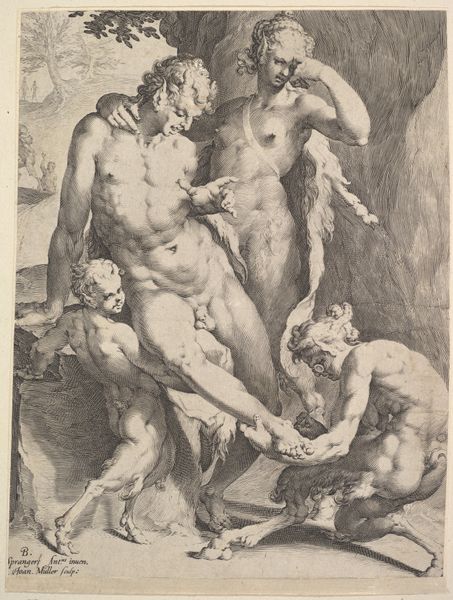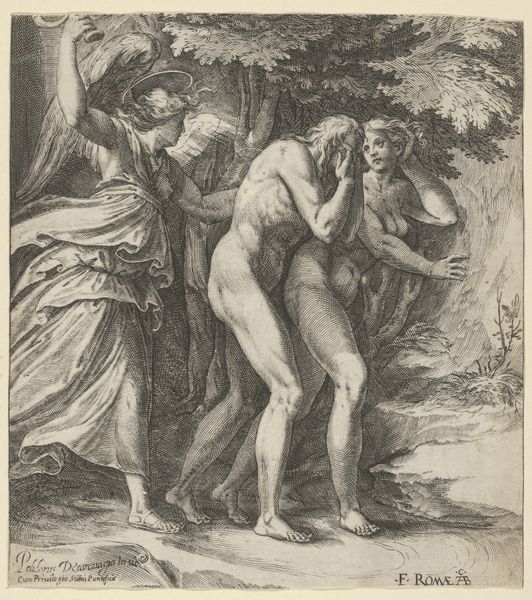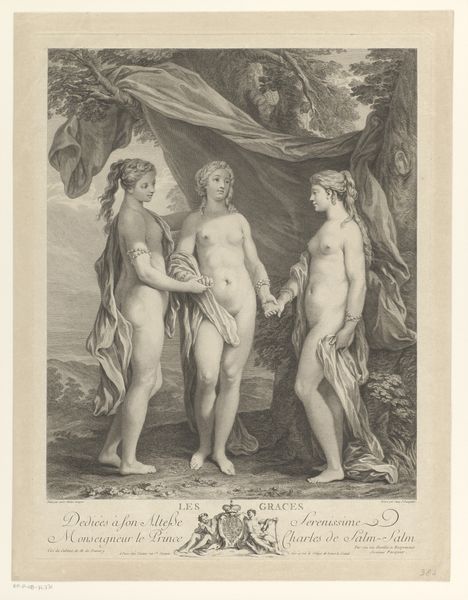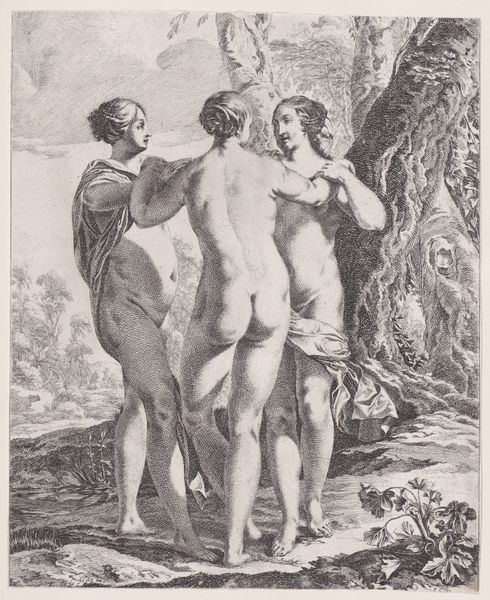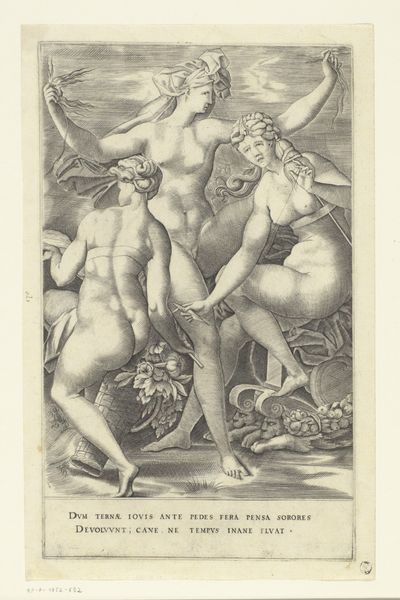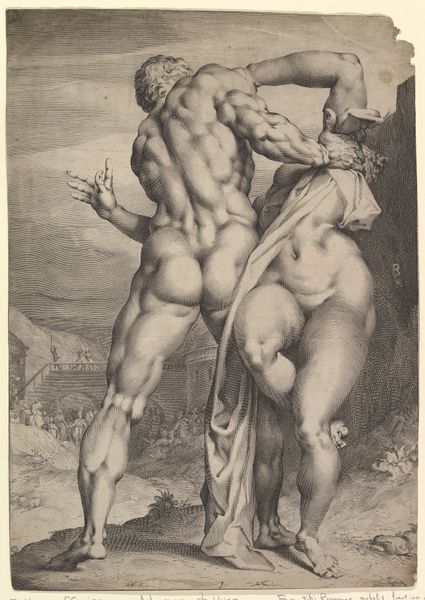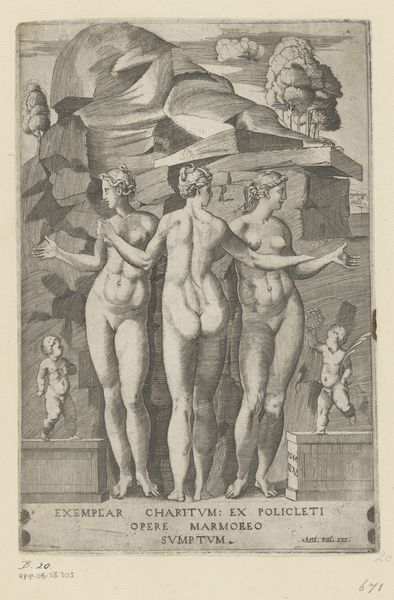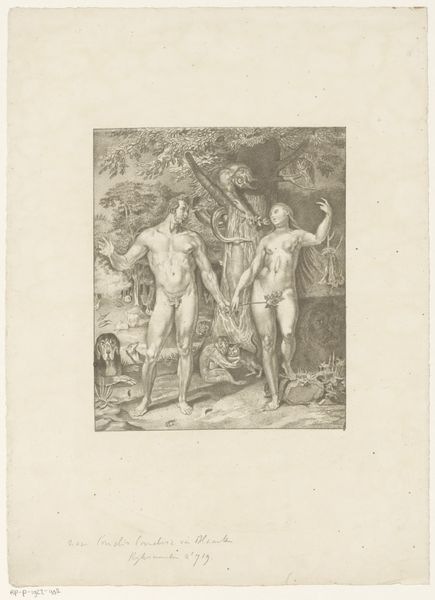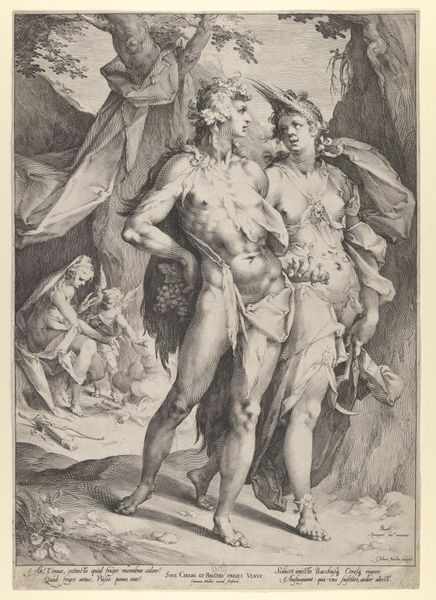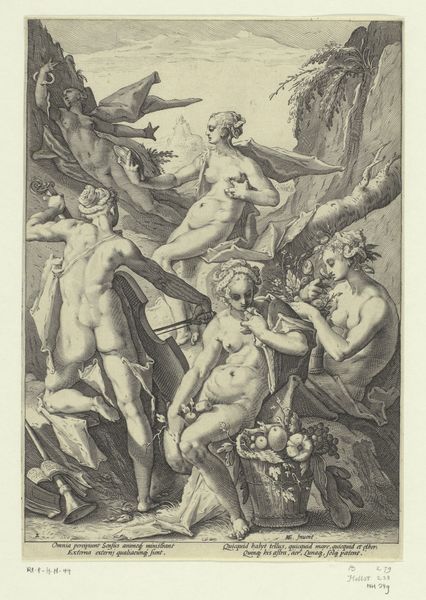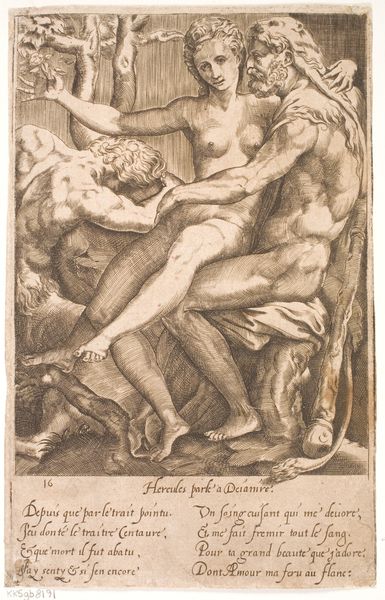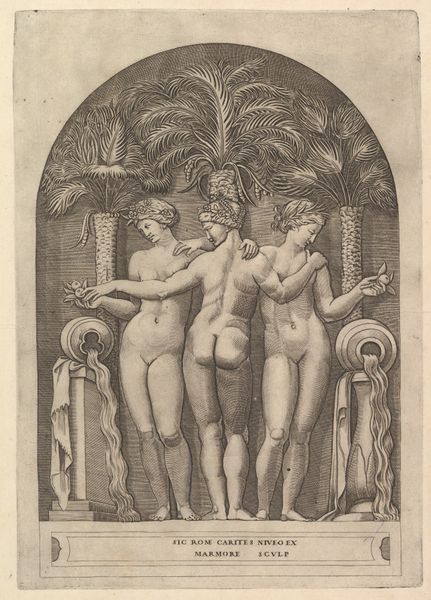
drawing, print, engraving
#
drawing
#
allegory
#
baroque
# print
#
figuration
#
history-painting
#
charcoal
#
nude
#
engraving
Dimensions: Plate: 19 3/16 × 13 3/4 in. (48.7 × 34.9 cm) Sheet: 19 1/4 × 21 3/4 in. (48.9 × 55.2 cm)
Copyright: Public Domain
Curator: Here we have Pieter de Jode II’s “The Three Graces,” an engraving from the period of 1625 to 1650, housed right here at the Metropolitan Museum of Art. Editor: Oh, my! The grayscale rendering makes them look like ghosts in a misty grove, but their interconnectedness is truly evocative. Curator: Indeed, de Jode beautifully captures the concept of grace. The way they are intertwined creates this sense of harmony and benevolence. The bodies have a certain fullness to them, Rubens-esque. Editor: Rubens or no, what interests me here is the *process* of engraving. Each delicate line carefully etched onto the plate represents hours of meticulous labor, transforming an image into something reproducible. This act of creation is just fascinating to ponder! Curator: Yes, I find that knowledge very affecting as well! Beyond the technique, though, the figures themselves – Euphrosyne, Aglaea and Thalia if we want to be precise – embodying joy, beauty, and elegance; de Jode's able use of chiaroscuro, even within the print medium, creates such dynamic interaction. Editor: Dynamic perhaps, but also rigidly idealized, no? This print feels rooted in the era's very particular—and constricting—social attitudes toward female bodies. And the original materials used – the copper plate, the inks – all contribute to this layered cultural artifact we now consume as "art." What’s that say? Curator: Maybe! Perhaps. However, in my mind, de Jode makes us think about the cyclical nature of creation, its ties to virtue, the interconnectedness that binds humanity together. It offers a glimpse into the eternal. And isn't that enchanting? Editor: Enchanting it might be, but its materials ground it firmly in its own historical and cultural moment—a reminder of the tangible labor involved in the artistic process. Anyway, interesting interpretation... Curator: Well, thank you for highlighting a view different than my own; hopefully, our perspectives gave you more to ponder, making this a captivating and engaging artwork to consider from many angles.
Comments
No comments
Be the first to comment and join the conversation on the ultimate creative platform.
